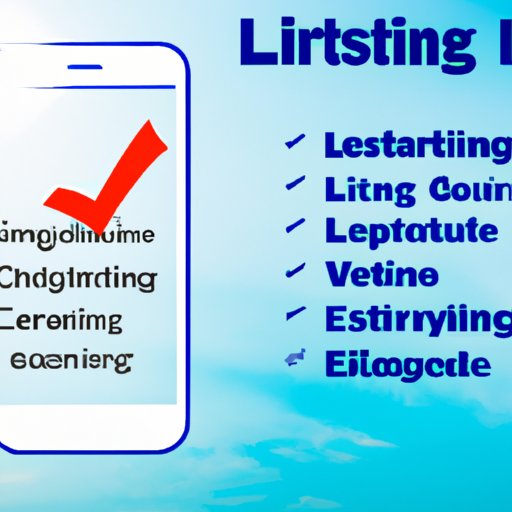Introduction: Explaining the Need to List a Business for Sale
Listing a business for sale can be an intimidating process, but knowing what steps to take and how to go about it can make the process much smoother. Whether you’re looking to sell the business outright or transition into a new role as part of the sale, there are a few key steps you should take to ensure a successful outcome. This article will provide a step-by-step guide on how to list your business for sale in order to maximize its value and find the right buyer.

Research Potential Buyers: Identifying and Researching Buyers Who Are Interested in Purchasing the Business
First and foremost, you need to identify potential buyers who may be interested in purchasing the business. This can include individuals, private equity firms, venture capitalists, and even other businesses. Once you have identified potential buyers, it is important to assess their requirements. What type of businesses are they looking for? What do they expect from a potential acquisition? What is their timeline for a purchase? Knowing these answers can help you determine whether or not a potential buyer is a good fit for your business.
It is also important to identify the goals of the potential buyers. Are they looking to expand their current operations or diversify their portfolio? Understanding their objectives can help you craft a compelling case for why they should invest in your business. Additionally, you can use this information to highlight the unique features of your business that could benefit them.

Prepare Documentation: Assembling the Necessary Documentation to List the Business for Sale
In order to effectively list your business for sale, you must assemble all the necessary documentation. This includes financials such as income statements, balance sheets, and cash flow statements. You should also include documents related to any contracts, leases, permits, and other legal agreements associated with the business. Finally, you should have records of past performance, customer reviews, and other relevant information that could demonstrate the value of the business to potential buyers.

Create a Listing: Developing a Comprehensive Listing That Highlights the Key Features of the Business and Its Potential Value to Buyers
Once you have gathered all the necessary documentation, you can begin creating a comprehensive listing that outlines the key features of the business and its potential value to buyers. This listing should include a description of the business, its location, size, and any competitive advantages it has over other similar businesses in the area. Additionally, it should include financial information, such as revenue, profits, and growth projections. Finally, it should include any additional details that could help potential buyers understand the potential return on investment they could receive by purchasing the business.
Advertise Your Listing: Promoting the Business Listing Through Online Platforms, Industry Publications, and Other Media Outlets
Once you have created a comprehensive listing of the business, the next step is to promote it. The best way to do this is by leveraging online platforms such as LinkedIn, Twitter, and Facebook. Additionally, you should consider placing ads in industry publications and reaching out to potential buyers through email campaigns. You should also consider attending networking events and conferences to further promote the business listing.
Negotiate Terms: Working With Buyers to Negotiate the Terms of the Sale and Ensure Both Parties Are Satisfied With the Deal
Once you have identified potential buyers and advertised the business listing, it is time to negotiate the terms of the sale. During the negotiation process, it is important to ensure that both parties are satisfied with the deal. This means taking into account the buyer’s needs and expectations, as well as the seller’s objectives. Once the terms of the sale have been agreed upon, you can move forward with the transaction.
Conclusion: Summarizing the Steps for Listing a Business for Sale
Listing a business for sale can be an intimidating process, but following these steps can make it much easier. Start by researching potential buyers and assessing their requirements. Then, assemble the necessary documentation and create a comprehensive listing of the business. Next, advertise the listing through online platforms, industry publications, and other media outlets. Finally, negotiate the terms of the sale and ensure both parties are satisfied with the deal. By following these steps, you can successfully list your business for sale and maximize its value.
(Note: Is this article not meeting your expectations? Do you have knowledge or insights to share? Unlock new opportunities and expand your reach by joining our authors team. Click Registration to join us and share your expertise with our readers.)
